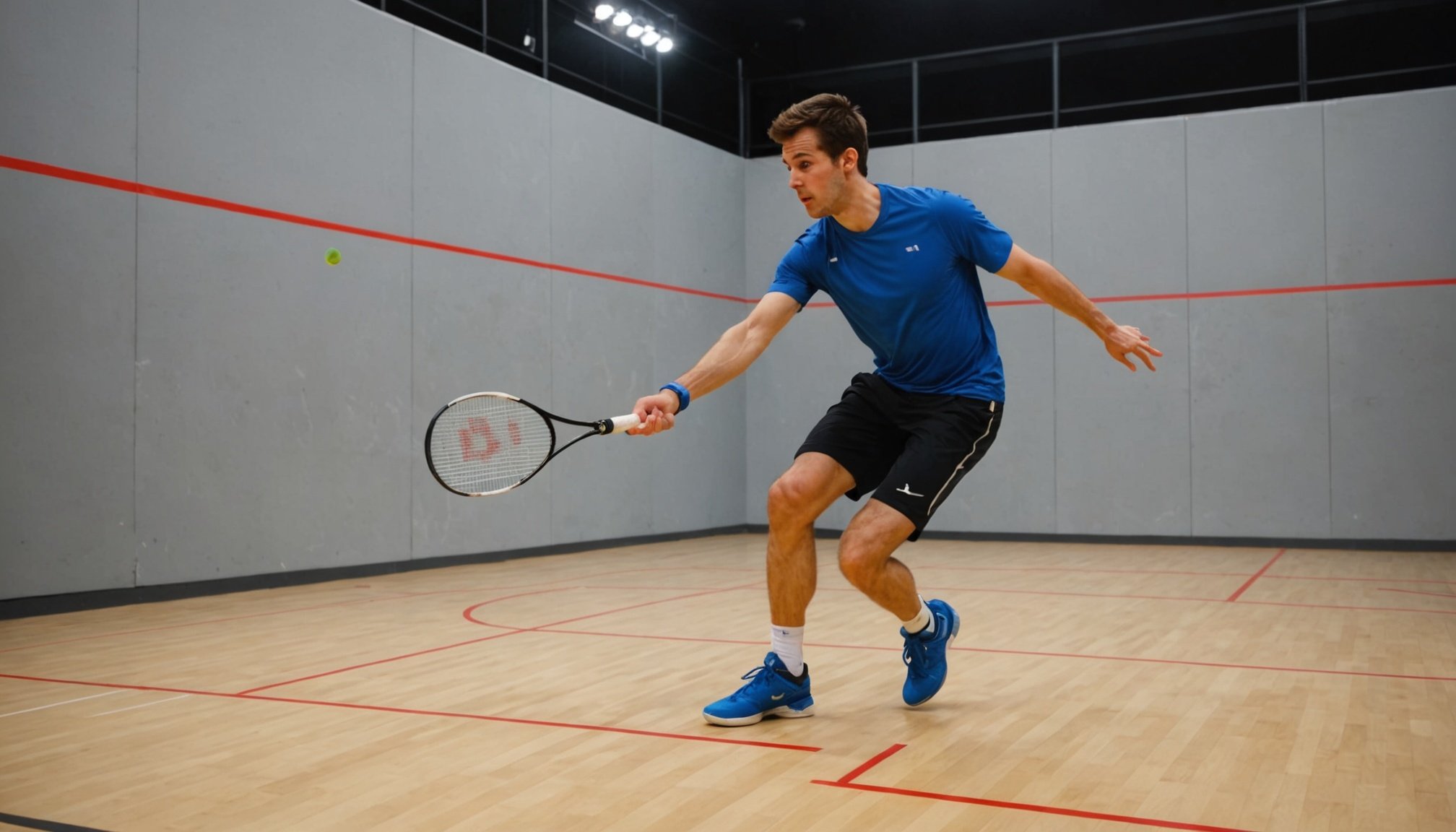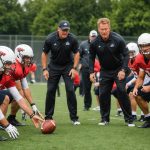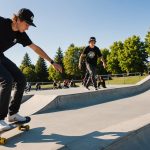Importance of Footwork in Squash
Footwork plays a significant role in enhancing overall squash performance. Efficient footwork not only increases speed on the court but also optimises the player’s positioning, allowing for more strategic shot choices. Agility and balance, key components of strong footwork, directly impact competitive results. When players master their movement, they can transition smoothly between shots, decreasing the chances of being caught off-guard by an opponent’s quick play.
The connection between footwork efficiency and shot accuracy is crucial. Players who move precisely can align their bodies correctly and balance appropriately for their strokes, leading to more accurate returns. This alignment aids in executing powerful shots while conserving energy, which is vital during intense matches.
In the same genre : How can tracking your nutrition improve your fitness outcomes?
Agility, an essential aspect of footwork, enables players to respond rapidly to their opponent’s shots, maintaining dominance in rallies. Furthermore, balance helps in maintaining control, vital for executing complex shots and making strategic decisions under pressure. Improving these elements can significantly elevate a player’s game, contributing to more consistent and competitive performance. By focusing on footwork, squash players can enhance their game and gain a strategic edge over their opponents.
Essential Footwork Drills for Squash Players
Mastering footwork drills is crucial in squash training exercises for improving agility, coordination, and overall performance on the court.
In parallel : Fueling victory: how sports nutrition drives athletic excellence in competitive events
Ladder Drills
Ladder drills are a staple in enhancing a squash player’s agility. They involve precise foot placement through a series of rungs, demanding quick, swift movements. Ladder drills significantly improve coordination by encouraging players to navigate tight spaces smoothly. For maximum effectiveness, focus on maintaining a low stance and progressing through the rungs at a steady pace. Repetitive practice helps instill the muscle memory necessary for rapid reactions during a game.
Side-to-Side Shuffle
Incorporating the side-to-side shuffle in your routine develops lateral movement, which is vital in squash. This exercise ensures efficient sidestepping to quickly reach the ball. Key pointers include keeping the knees slightly bent and maintaining a balanced posture, which prevents unnecessary strain on the lower body.
Front and Back Movement Drill
In terms of court coverage, the front and back movement drill enhances your ability to manage shots that require quick direction changes. This drill involves moving swiftly from the front to the back of the court. Aim for various repetitions to build endurance, and consider adding obstacles to simulate real match pressure.
Ghosting Practice
Ghosting practice involves mimicking on-court movements without a squash ball. By visualizing the ball and executing precise footwork, players can target specific weaknesses in their movement. Incorporate ghosting regularly into your routine and experiment with variations to challenge footwork agility.
Integrating Drills into Training Routines
To create a successful training routine in squash, seamlessly incorporating footwork integration is essential. Crafting a comprehensive schedule involves balancing drills with other necessary skills, such as ball control and strategic play. Begin by charting out a weekly plan that specifies dedicated times for footwork drills. This helps ensure regularity and allows ample time to focus on other squash skills.
Footwork drills should not overpower the schedule. Balance them with squash skills like volleys, serves, and match strategy. A common approach is the 50/50 rule—dedicating half the training time to footwork, while the other half focuses on racket skills. This integration ensures a well-rounded enhancement of abilities.
Tracking progress and adapting routines are crucial for continual improvement. Record each session’s outcomes to understand your strengths and areas needing attention. Over time, tailor the drills to address weaknesses and elevate your performance. Maintain a dynamic approach—the best routines evolve as you become more proficient.
In summary, a robust training routine targets essential squash components while promoting balanced growth. Blending footwork with other skills effectively elevates overall prowess, driving players toward mastery.
Tips for Proper Technique and Injury Prevention
Mastering the art of footwork requires not only practice but also a keen awareness of injury prevention. Before engaging in drills, it’s crucial to prioritise warming up and stretching. These pre-drill activities enhance flexibility, increase blood flow, and prepare the muscles for footwork techniques.
One of the most common footwork mistakes is neglecting balance. Balance ensures that movements are precise and prevents unnecessary strain on muscles and joints. To maintain proper balance, distribute your weight evenly and practice transitioning smoothly between movements. Additionally, avoiding excessive pivoting on the toes helps minimise the risk of twisting injuries.
Recognising signs of fatigue and overuse injuries can avert long-term damage. Pay attention to recurring pain, swelling, or a persistent feeling of heaviness in the feet and legs. These symptoms suggest that your body needs rest or a change in training intensity. Allow adequate recovery time to mitigate the progression of overuse injuries and promote overall foot health.
Incorporating these footwork techniques and injury prevention strategies into your routine will not only enhance performance but also ensure that your training is sustainable and safe.
Benefits of Improved Footwork in Squash
Enhancing your footwork skills in squash can significantly boost your performance benefits. One of the most notable advantages is increased quickness and responsiveness on the court. Quick foot movement allows players to reach shots more efficiently, making it possible to counter opponents’ actions swiftly.
Furthermore, improved footwork leads to increased endurance and reduced fatigue during intensive matches. When players move more efficiently, they expend less energy, conserving strength for crucial moments in the match. This endurance enhancement is a game-changer, enabling longer play sessions without sacrificing performance quality.
Another crucial aspect of better footwork is superior shot placement. By positioning themselves advantageously on the court, players can execute shots with greater precision. This strategic advantage can put opponents under pressure, forcing errors and opening opportunities for winning points.
Mastering footwork is also pivotal for overall skill enhancement. As movement becomes second nature, players can focus on refining other aspects of their game, such as technique and strategy, which are essential for advancing in skill levels and staying competitive.
Conclusively, honing footwork skills in squash is a holistic approach to elevating both the physical and tactical dimensions of a player’s game.











